Are you looking to secure funding for your IT projects? Crafting a well-structured budget approval letter can make all the difference in achieving your goals. In this article, we'll explore key elements that should be included in your request, as well as tips for presenting your case compellingly. Ready to enhance your budget proposal? Let's dive in!

Clear Objective Statement
A clear objective statement is essential for securing IT budget approval, particularly for initiatives aimed at enhancing operational efficiency. The objective should outline specific goals, such as increasing cybersecurity measures to protect sensitive data, upgrading outdated hardware and software systems, or implementing cloud computing solutions to facilitate remote work capabilities. For instance, investing in a robust firewall system can help prevent data breaches, which can cost organizations an average of $3.86 million per incident (according to the 2020 Cost of a Data Breach report). The allocation of funds should align with projected returns on investment, such as reduced downtime and improved productivity. Justifying budget requests with concrete data and relevant statistics can also help stakeholders understand the necessity of the proposed IT expenditures.
Detailed Budget Breakdown
A comprehensive IT budget proposal outlines essential expenses for 2024 to enhance technology infrastructure within an organization. Primary categories include hardware acquisitions, such as servers (estimated cost: $75,000), software licensing (approximately $15,000 for productivity tools), cybersecurity measures (expected expense of $30,000 for advanced threat detection systems), and personnel training programs (costing around $10,000 to upskill staff on latest technologies). Essential projects encompass a database upgrade aimed at improving data retrieval speed (project budget: $50,000) and cloud migration services to streamline operations (estimated at $100,000). Each line item reflects strategic planning to optimize resources, ensuring alignment with organizational goals while enhancing productivity and security. Detailed analysis of projected ROI illustrates potential cost savings and increased operational efficiency.
Justification and Benefits
The IT budget request aims to enhance operational efficiency through strategic investments in technology infrastructure and resources. Key benefits include upgrading existing hardware to improve performance for approximately 150 employees in the Boston office, implementing new cybersecurity measures to protect sensitive data against increasing threats, and acquiring cloud storage solutions to facilitate collaboration across teams. Cost-saving measures, such as a projected 20% reduction in maintenance costs through updated systems, align with fiscal responsibility. This investment not only addresses immediate needs but also supports long-term growth objectives in alignment with the company's strategic plan for 2024.
Timeline and Implementation Plan
An IT budget approval request requires a clear timeline and implementation plan to ensure efficient allocation of resources and successful project execution. The proposed timeline spans six months, initiating with the needs assessment phase (Month 1), where team surveys and stakeholder interviews will gather input on required technology upgrades. The second phase (Month 2) includes vendor evaluation and selection, focusing on cost-effective solutions that align with organizational goals. Month 3 will involve finalizing contracts and procurement processes, ensuring compliance with legal standards. Implementation begins in Month 4, featuring system installations and configurations across departments. Training sessions for staff, scheduled for Month 5, will familiarize employees with new technologies to maximize productivity. The final month (Month 6) will focus on the review and optimization of implemented systems, including performance metrics evaluations to assess overall effectiveness. A detailed budget breakdown will support this timeline, ensuring transparency and accountability at every stage.
Potential Risks and Contingencies
Potential risks associated with IT budget approvals include underfunding leading to inadequate resources for system upgrades, potentially jeopardizing data security. Financial constraints can hinder the implementation of necessary cybersecurity measures, increasing vulnerability to breaches; for instance, the average cost of a data breach reached $4.35 million in 2022. Furthermore, delays in funding can result in stalled projects, affecting operational efficiency and employee productivity. Contingency plans such as allocating emergency funds (totaling 10% of the overall IT budget) for unexpected IT incidents can mitigate risks. Regular audits and risk assessments, along with a contingency workforce, ensure preparedness for unforeseen circumstances. Adaptability in project timelines and backup solutions enhances resilience against potential budget shortfalls.
Letter Template For It Budget Approval Request Samples
Letter template of IT budget approval request for departmental enhancements.
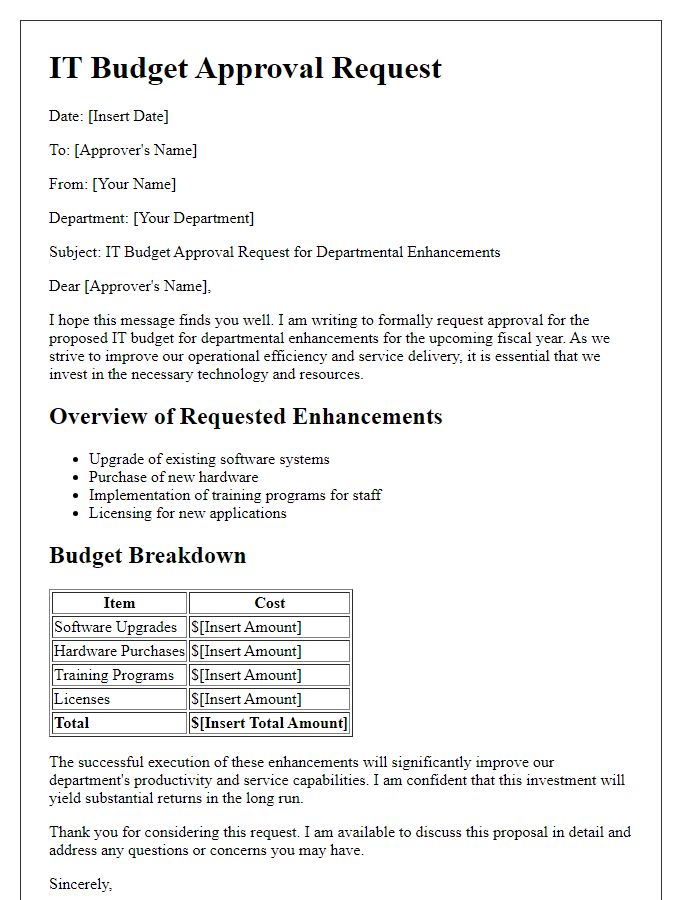
Letter template of IT budget approval request for new software implementation.
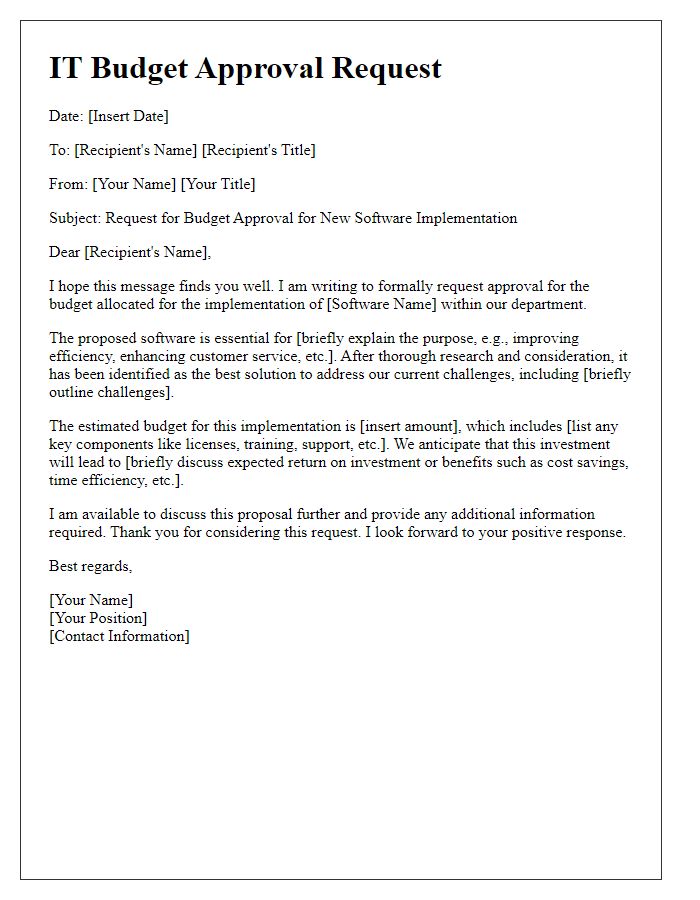
Letter template of IT budget approval request for cybersecurity improvements.
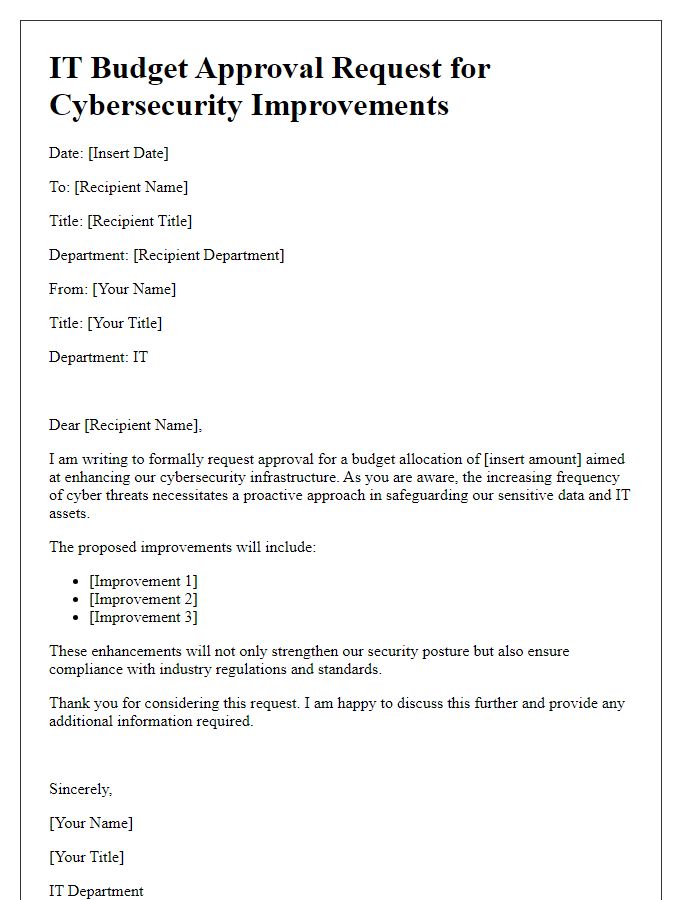
Letter template of IT budget approval request for cloud migration costs.
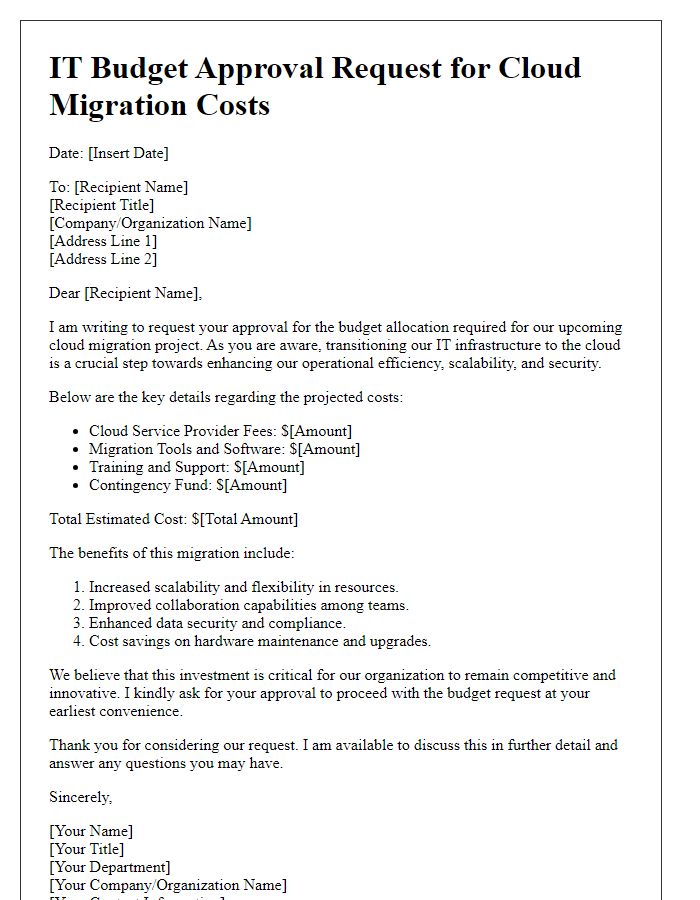
Letter template of IT budget approval request for training and development programs.
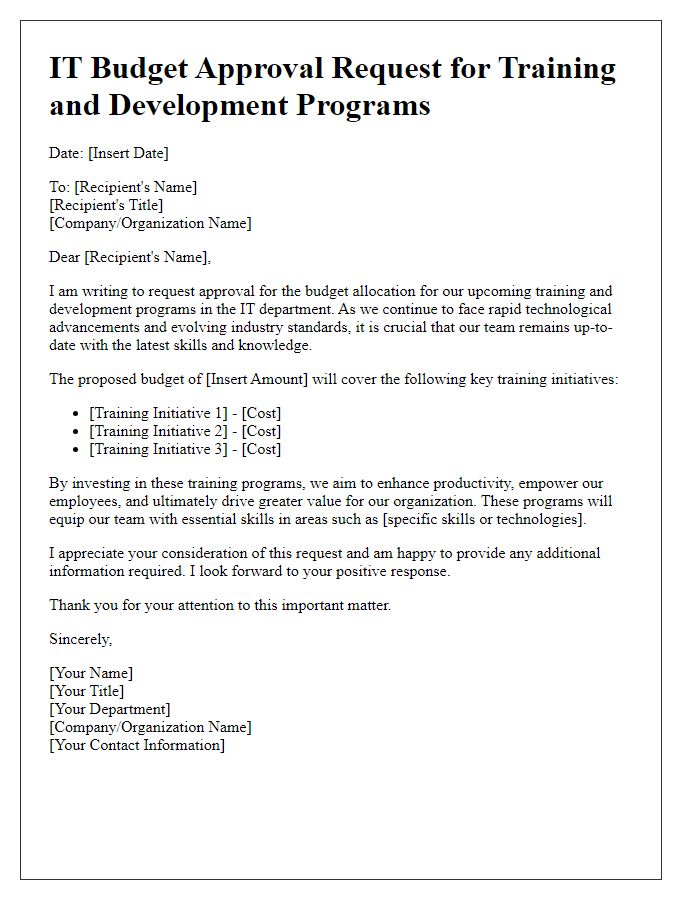
Letter template of IT budget approval request for digital transformation initiatives.
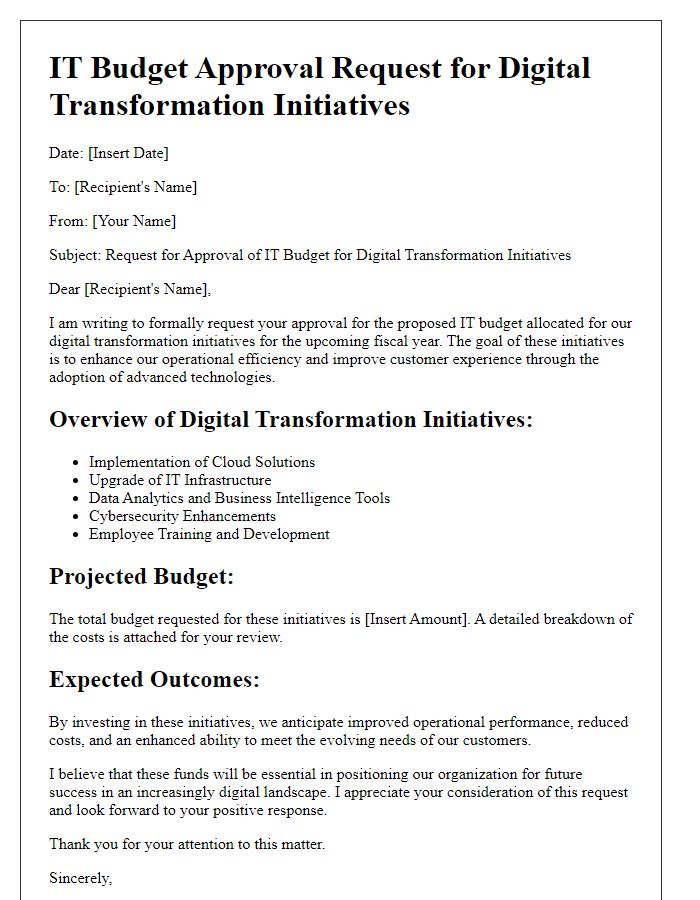
Letter template of IT budget approval request for network infrastructure expansion.
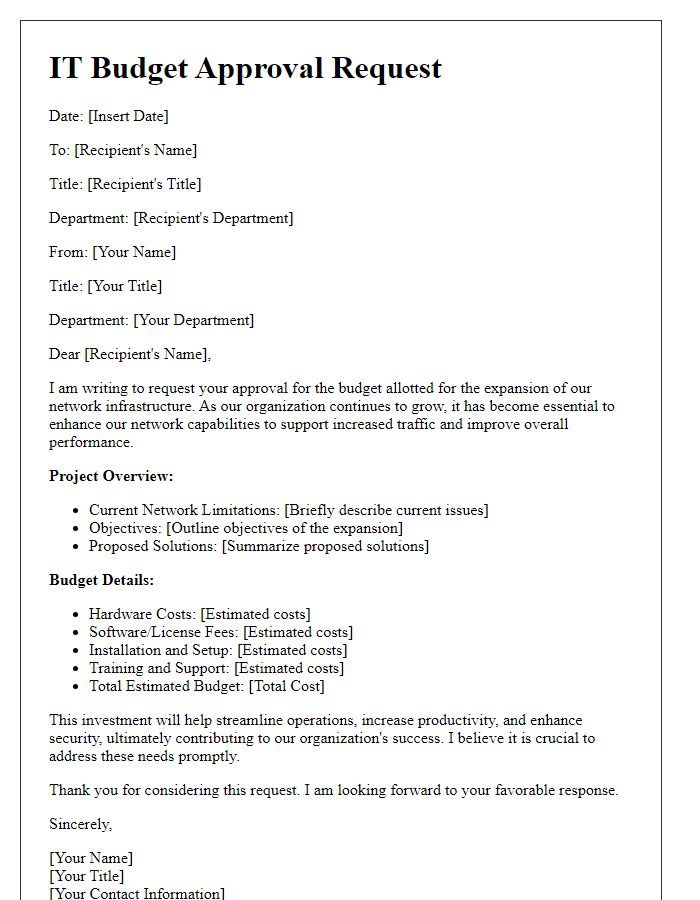
Letter template of IT budget approval request for technical support services.
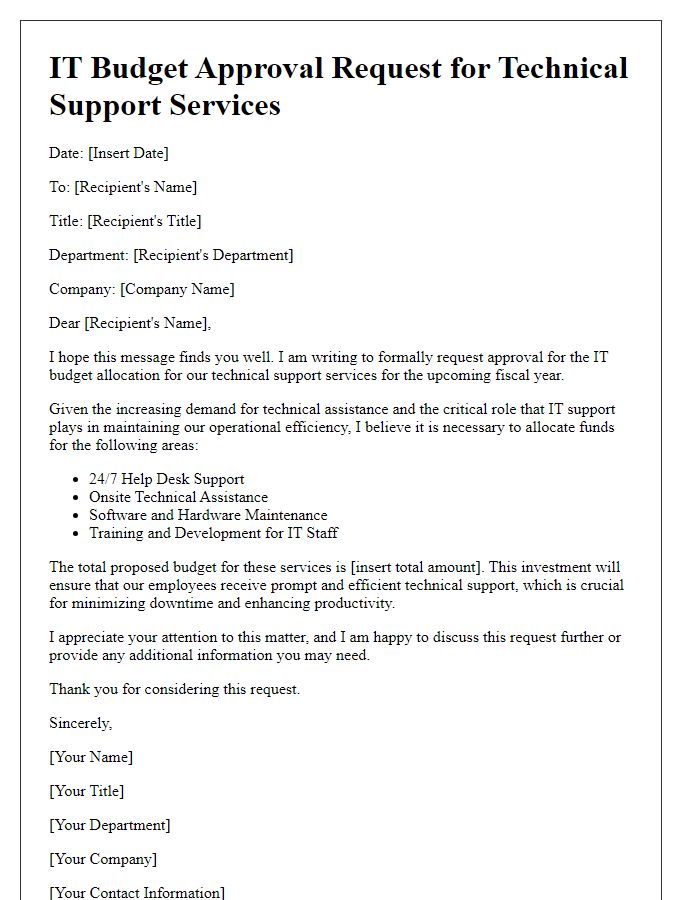

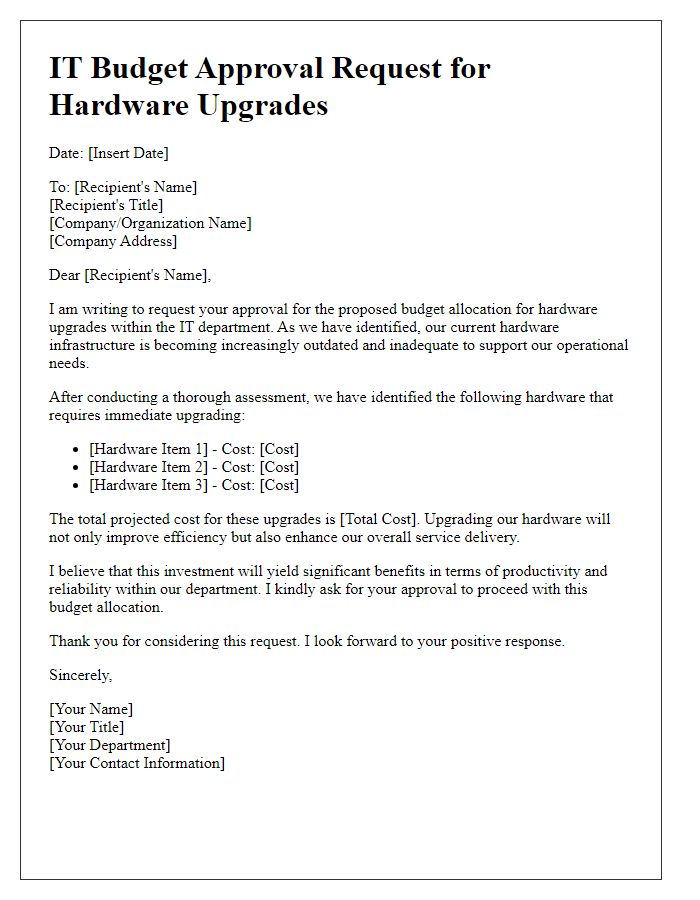
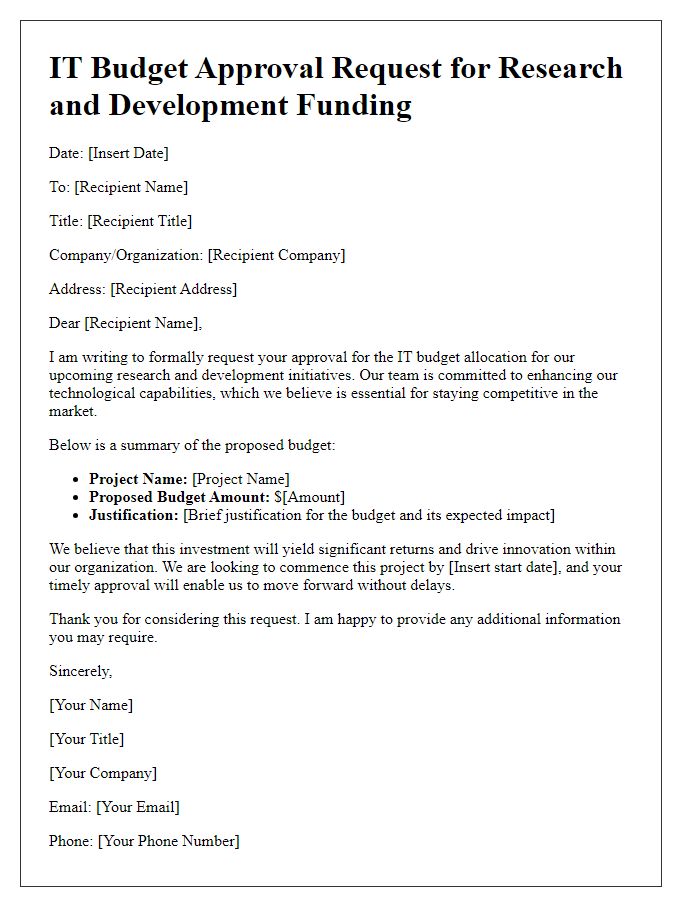


Comments